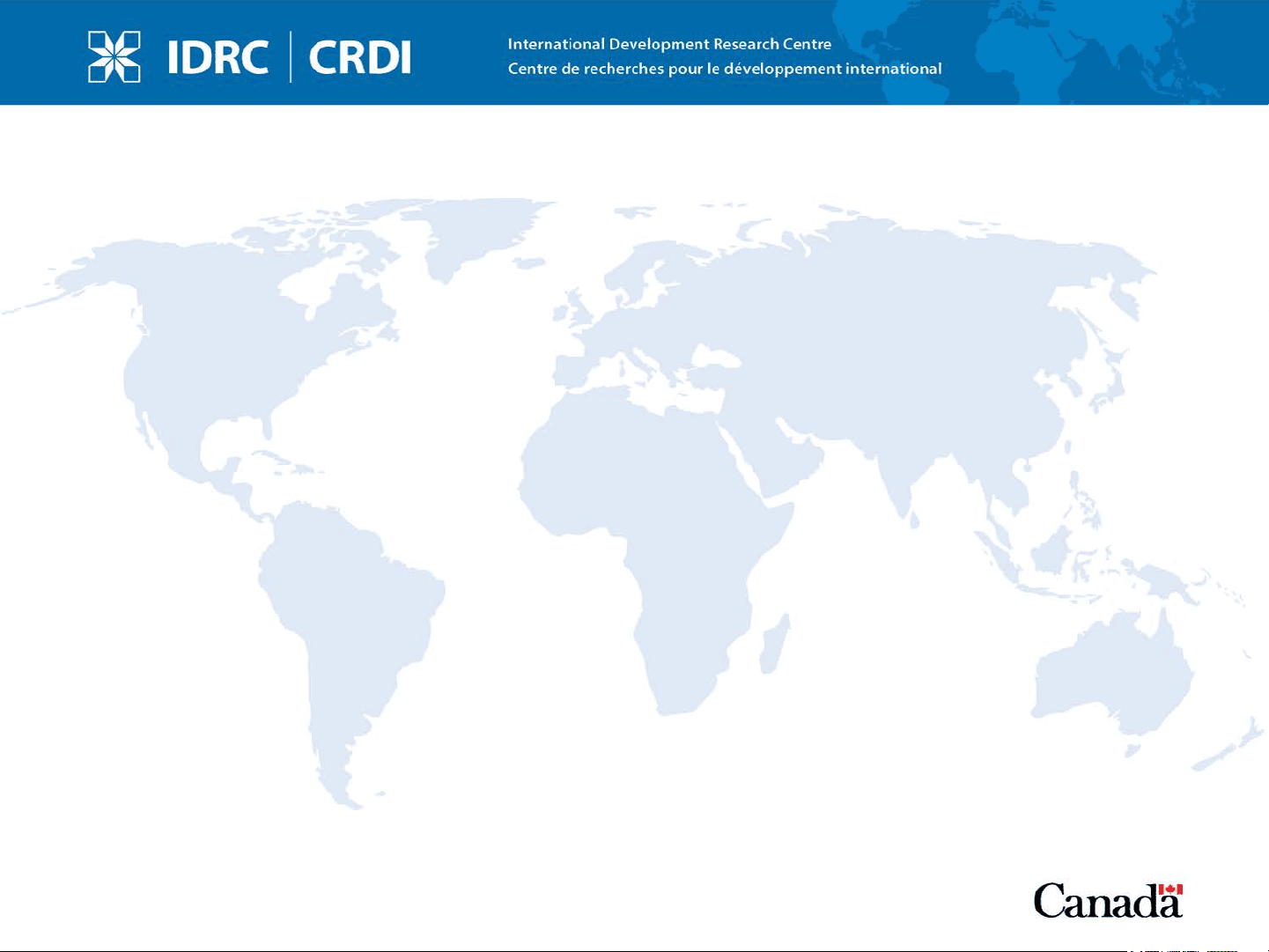
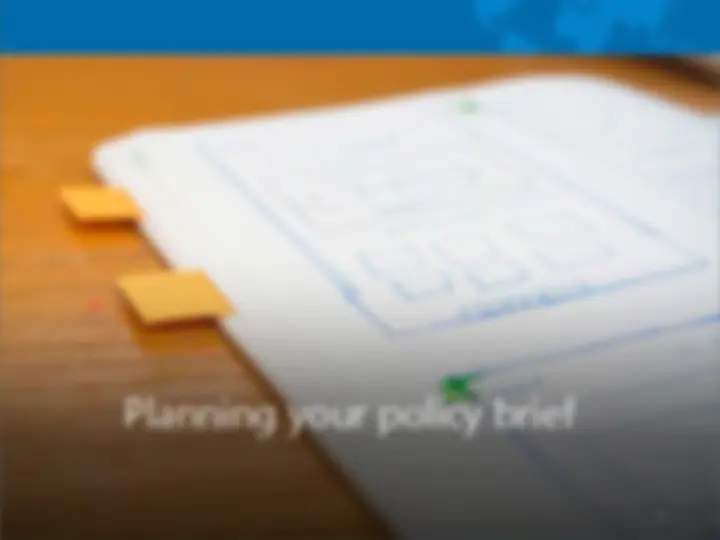
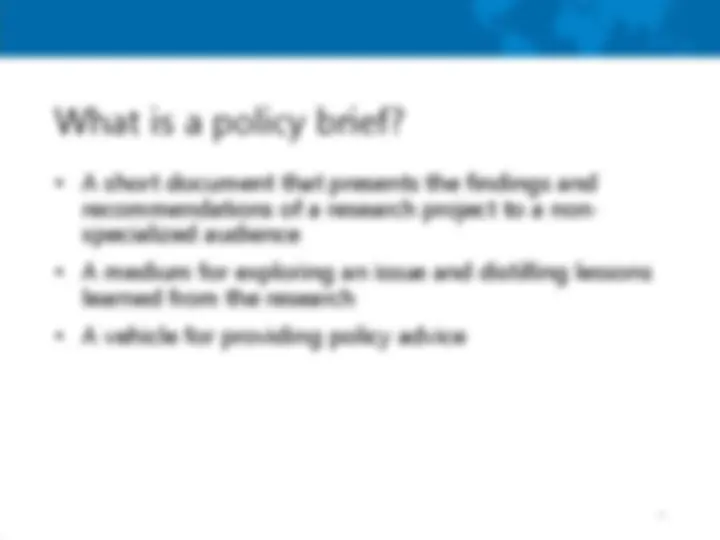
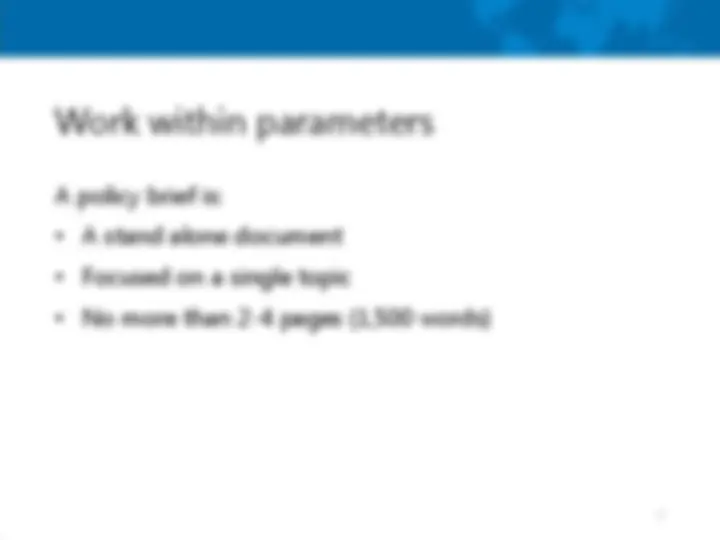
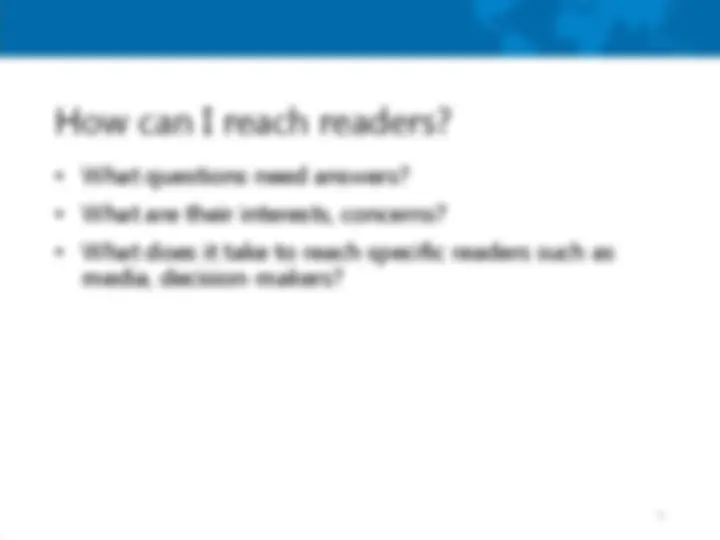
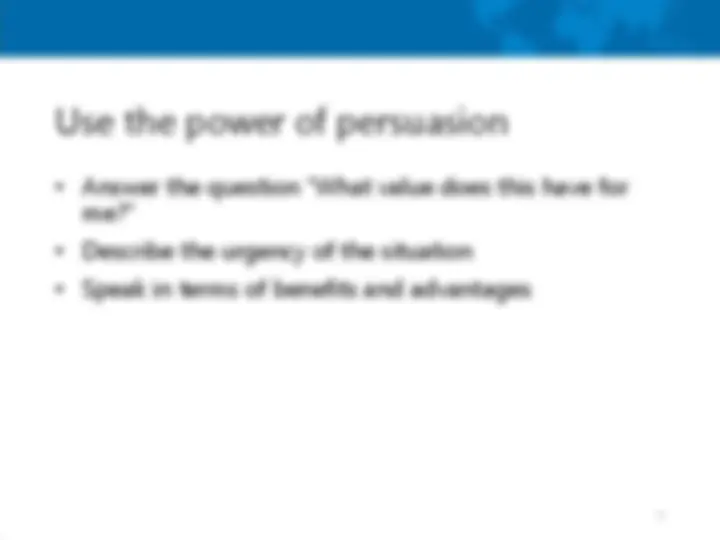


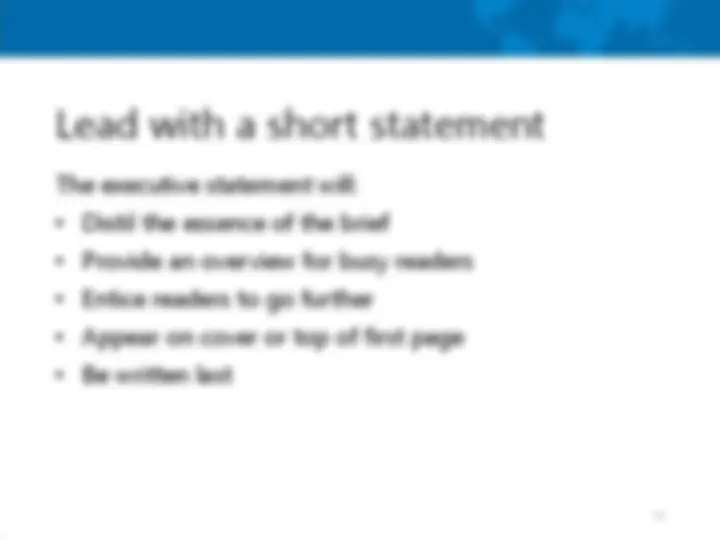
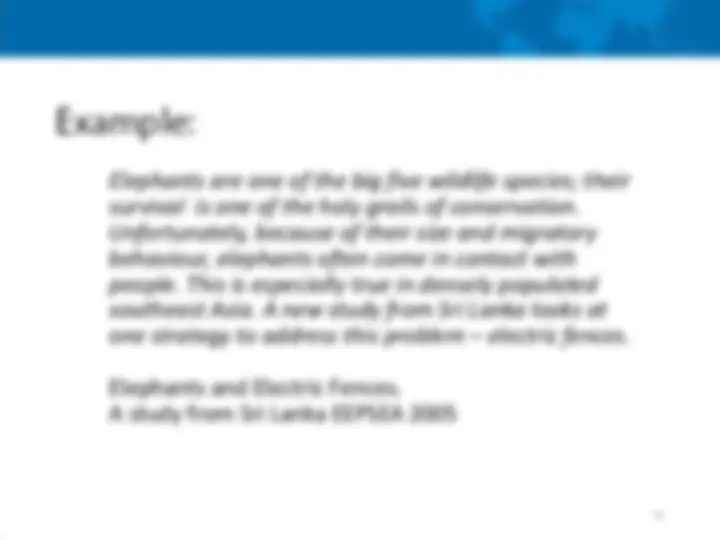
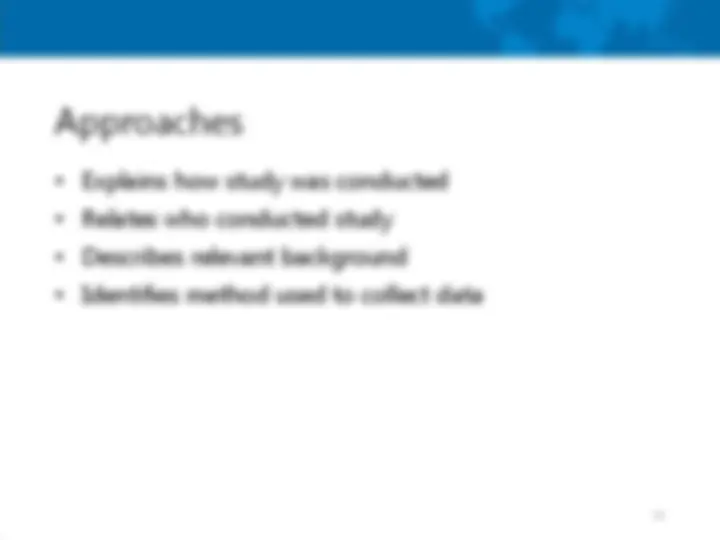
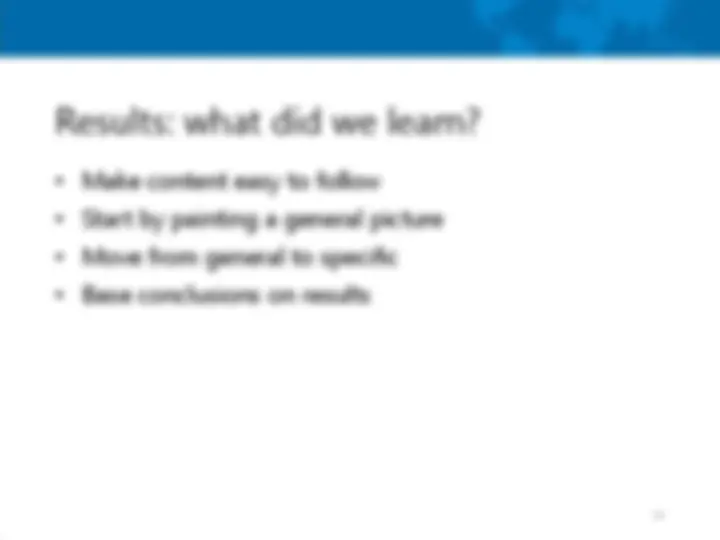
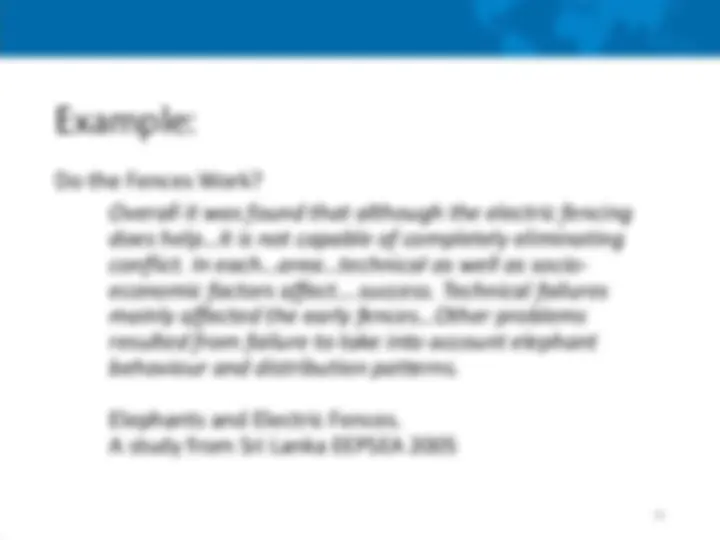
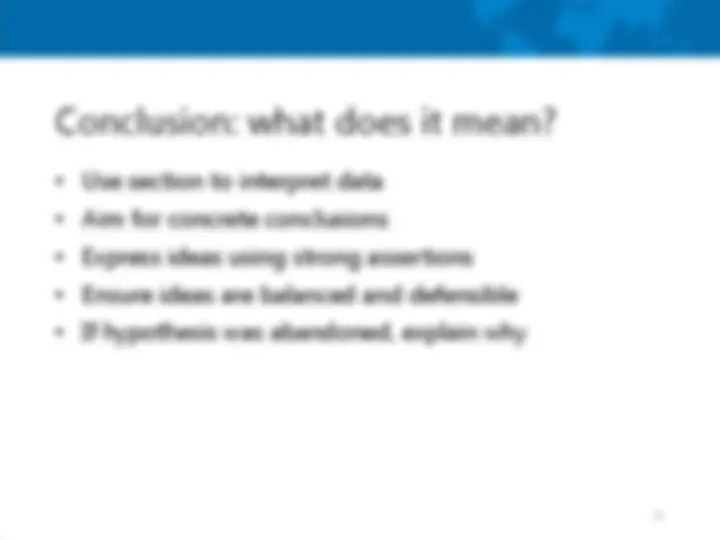
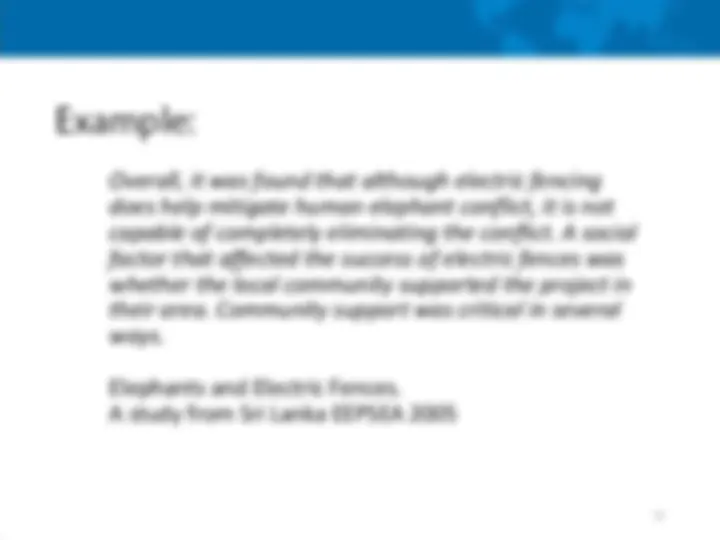
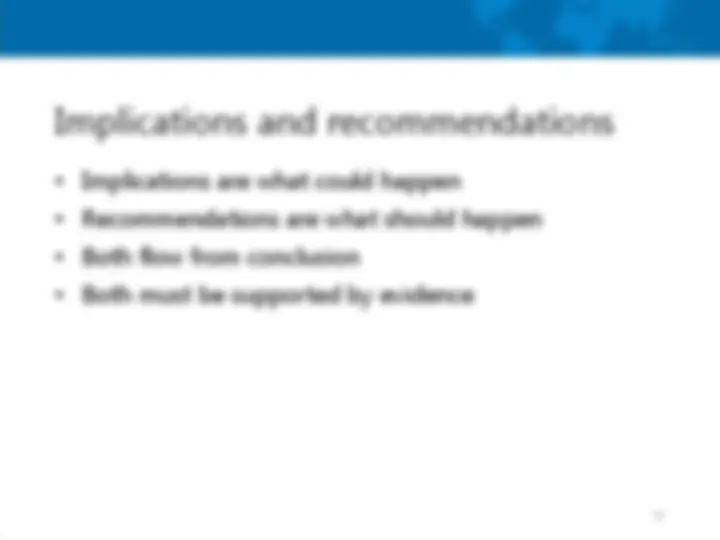
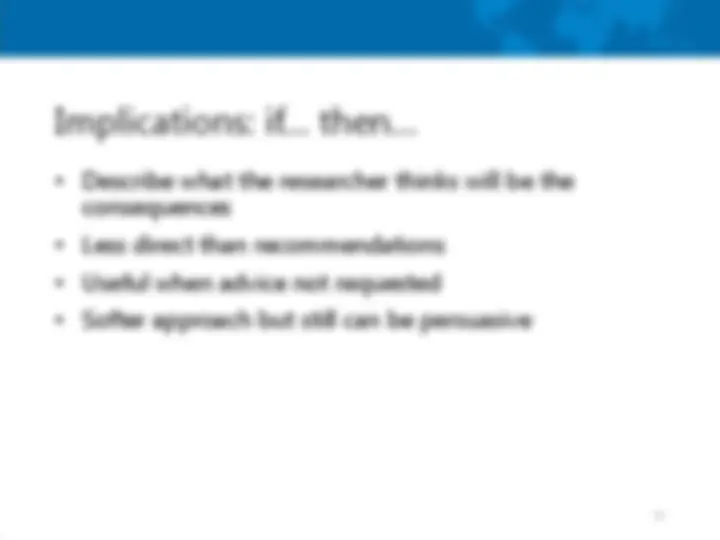
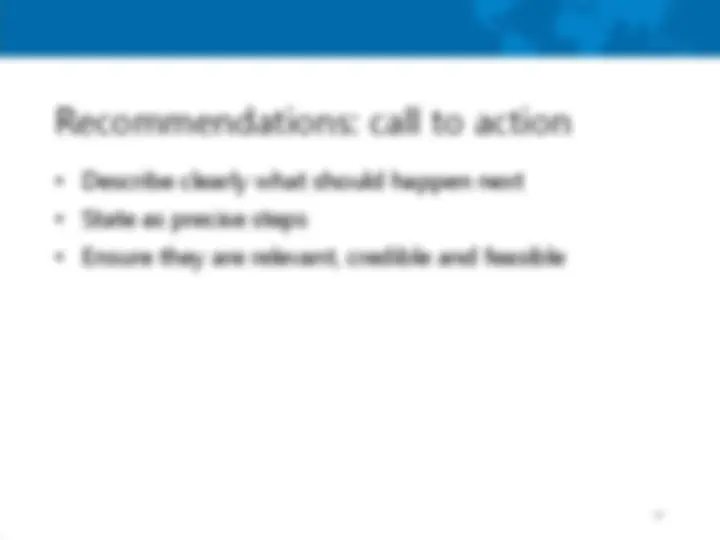
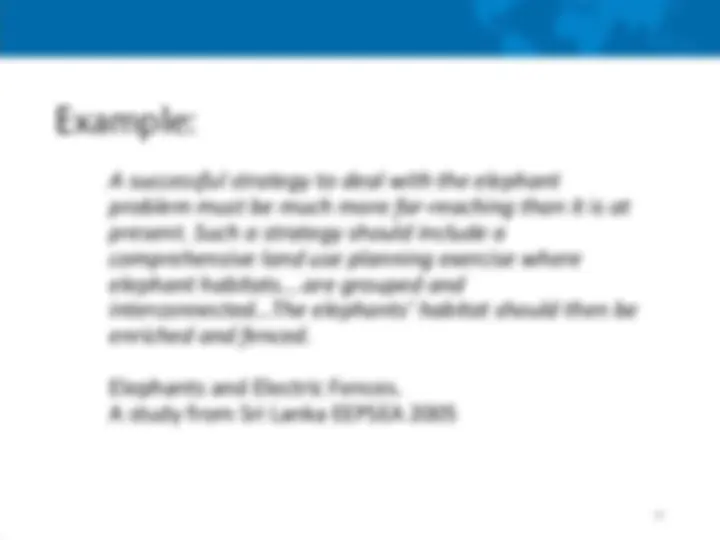
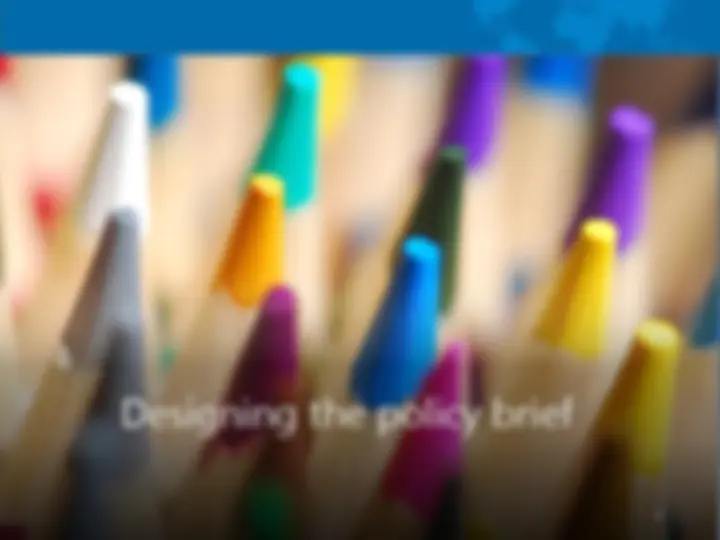
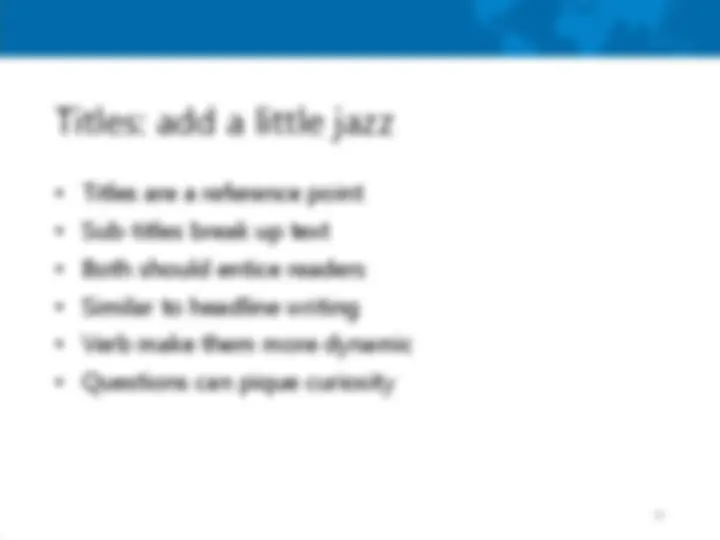
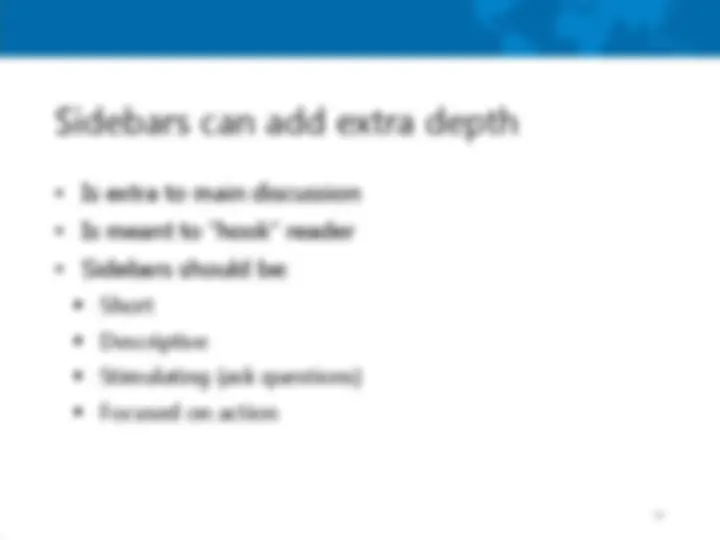
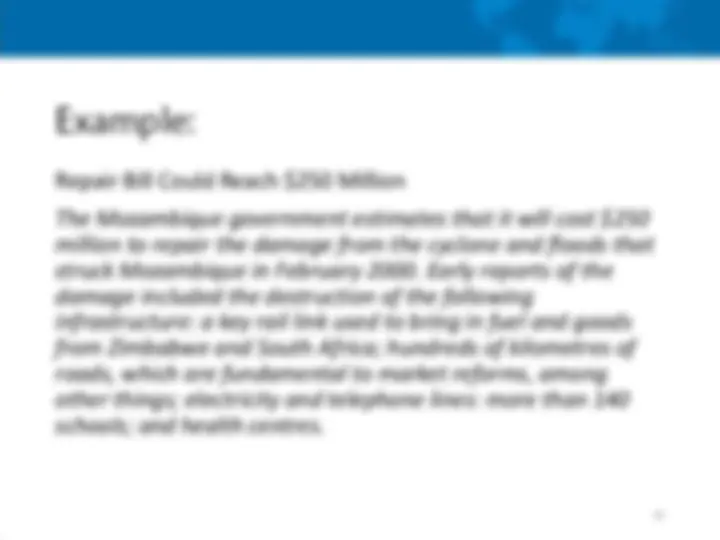
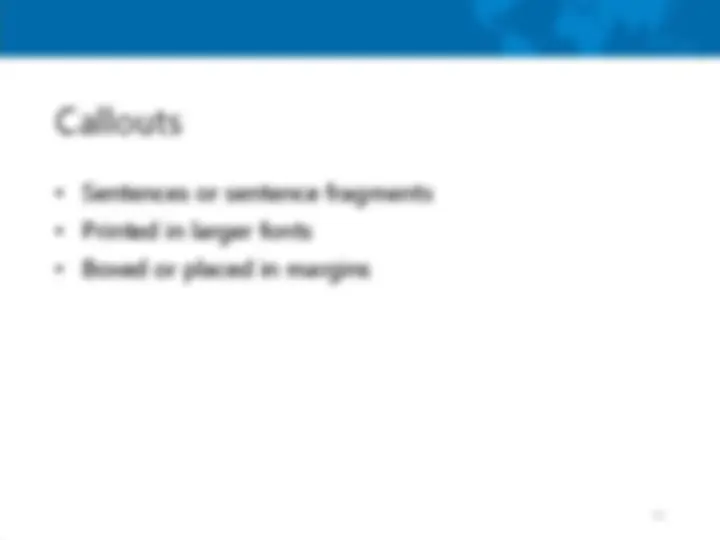
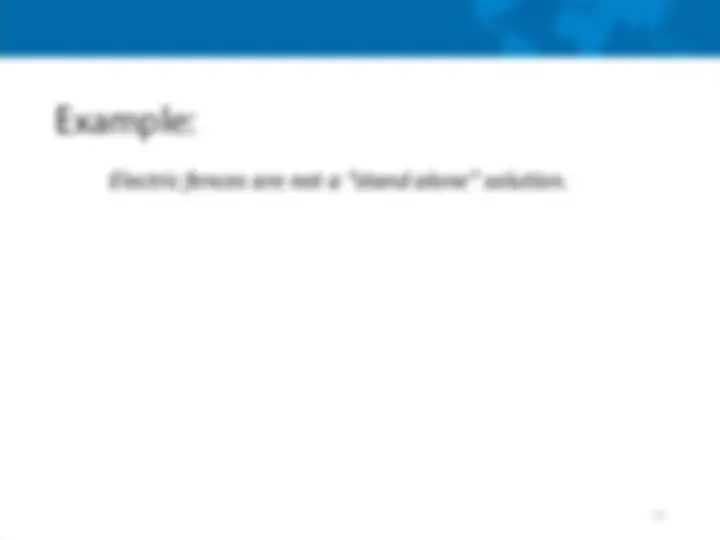
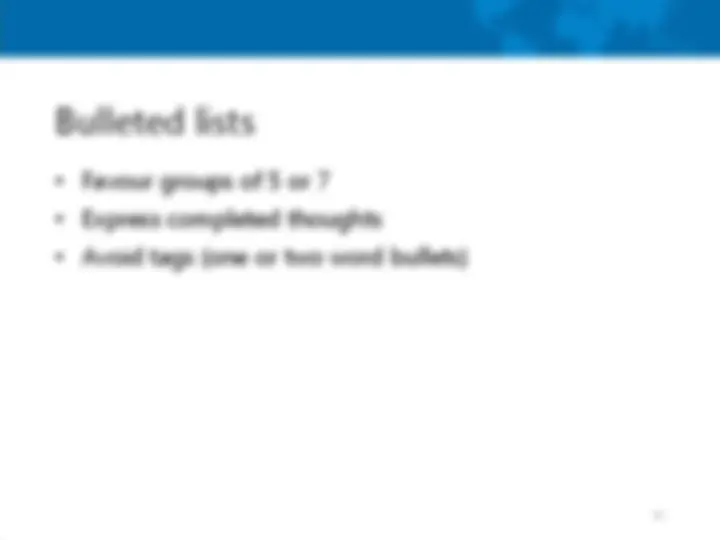
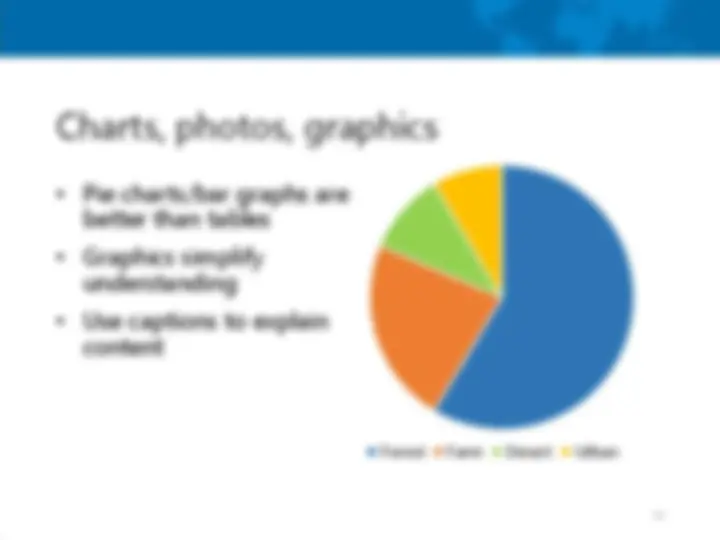

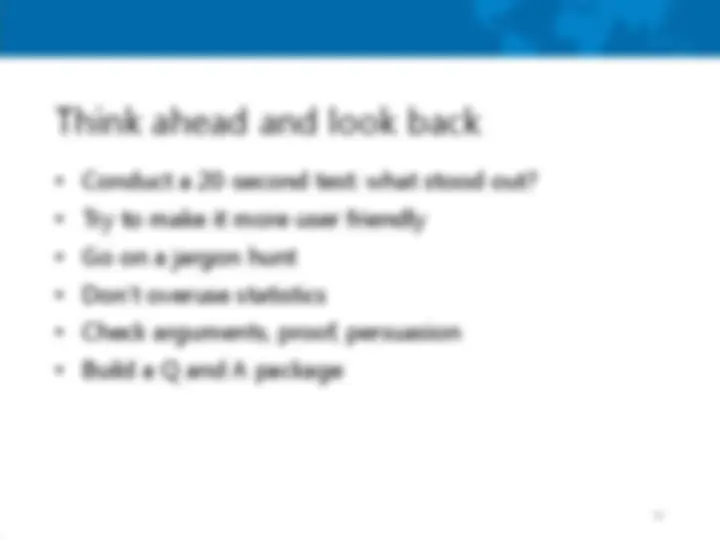
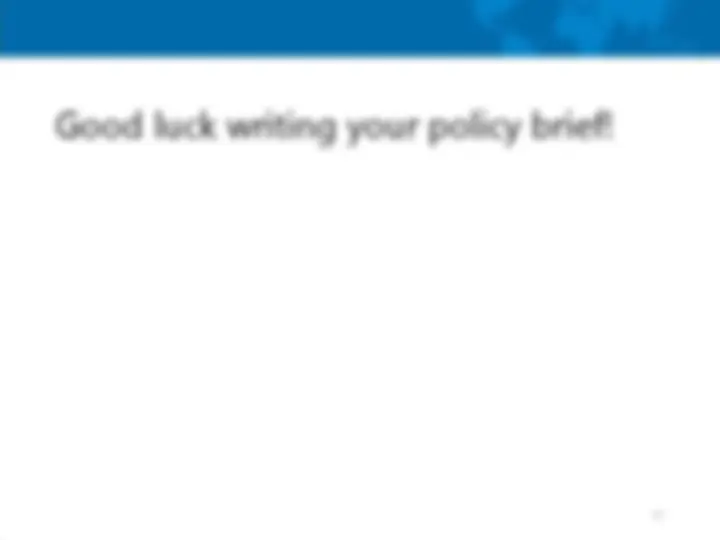


Study with the several resources on Docsity

Earn points by helping other students or get them with a premium plan


Prepare for your exams
Study with the several resources on Docsity

Earn points to download
Earn points by helping other students or get them with a premium plan
Community
Ask the community for help and clear up your study doubts
Discover the best universities in your country according to Docsity users
Free resources
Download our free guides on studying techniques, anxiety management strategies, and thesis advice from Docsity tutors
A step-by-step guide on how to write an impactful policy brief. It covers topics such as planning, writing for your audience, choosing content, and designing the brief. With examples and practical tips, this resource is essential for researchers, advocates, and policymakers.
Typology: Lecture notes
1 / 37

This page cannot be seen from the preview
Don't miss anything!






























This is a training tool developed by IDRC
A policy brief is:
Ask yourself:
The executive statement will:
Do the Fences Work?
Overall it was found that although the electric fencing does help…it is not capable of completely eliminating conflict. In each…area…technical as well as socio- economic factors affect….success. Technical failures mainly affected the early fences…Other problems resulted from failure to take into account elephant behaviour and distribution patterns.
Elephants and Electric Fences. A study from Sri Lanka EEPSEA 2005